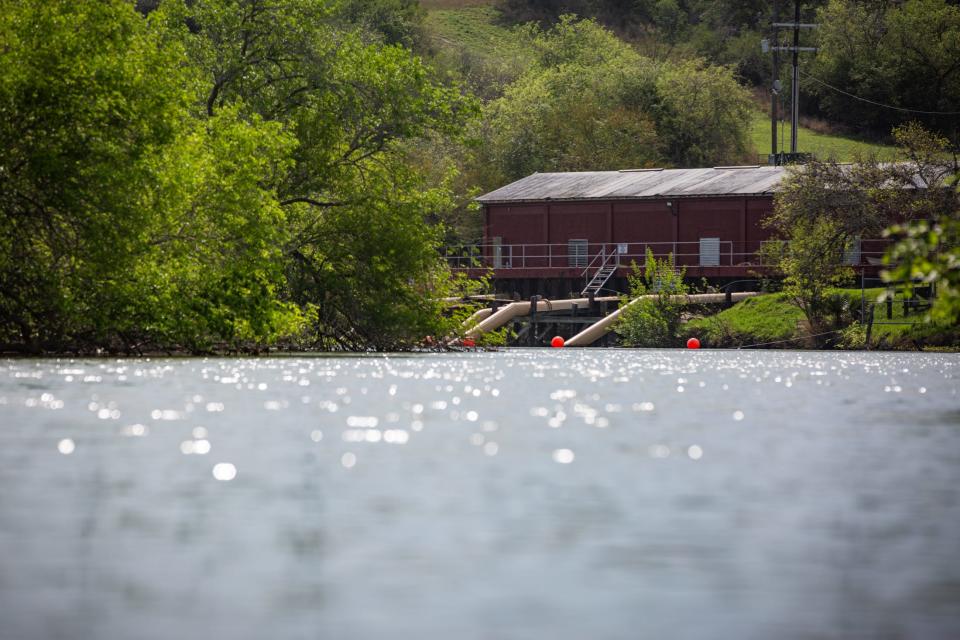City officials are concerned about water usage by a proposed ammonia plant. Here's why.
The proposed development of a green ammonia plant north of Corpus Christi has sparked debate among residents and local officials about Nueces River water rights and the volume of water that would be consumed as part of production.
The discussion as of late last week had reached the desks of state legislators, Nueces County officials, Corpus Christi city officials, the company – Avina Clean Hydrogen Inc. – and the local water district that would provide the water.
In memos, news releases and public meetings, city officials have voiced concerns about the potential water volume of the contract, both in how it may impact total regional supply and in potential costs for customers who are provided water by the city.
There’s concern that “increased water drawn solely from the Nueces River system could dramatically increase the potential for scarcity with this water supply,” states a March 1 memo to legislators, penned by Ryan Skrobarczyk, the city’s director of intergovernmental relations.
In a meeting earlier this week, company representatives said they aimed to be as conservative with water as possible.

The contract would be for 5.5 million gallons of water per day – four million gallons treated, and 1.5 million gallons per day raw, according to officials with the Nueces County Water Control and Improvement District No. 3.
Like Corpus Christi, the agency – which is independent of the city and the city’s infrastructure – serves the Robstown area and has rights to water drawn from the river.
The agency is permitted to draw about 10.5 million gallons of water per day, according to district officials.
The average is about 2.2 million gallons of water per day, which includes in its customers about 5,500 residential and two commercial connections, according to an email sent to the Caller-Times by the agency’s staff.
Marcos Alaniz, district manager of the Nueces County Water Control and Improvement, has generally declined to comment on statements that were made in the news release raising questions about impacts to the water supply.
City officials have been vocal about approaching Stage 2 drought restrictions.
As of Thursday, the capacity of Lake Corpus Christi and Choke Canyon Reservoir had dropped to about 30.2%. Stage 2 drought is declared when the combined capacities slip below 30%.
In a memo to Corpus Christi City Council members, City Manager Peter Zanoni described the Nueces River is “our cheapest of the four water sources we have today.
“The loss of millions of gallons of water a day will have an impact on our water supplies,” he wrote. “To backfill that loss will potentially result in rate impacts to all (Corpus Christi Water) customers.”
Water rights are legally complex in Texas – the water district’s rights are older that the city of Corpus Christi’s.
The city is working with attorneys to “to help us understand our and WCID3's water rights at the Nueces,” Zanoni wrote in the memo to the council.
City officials have said there are plans to schedule a meeting between city staff and water district officials.
Water for the plant
Avina representatives discussed water in a meeting with Nueces County commissioners earlier this week.
Karen White, Avina’s director of business development and regulatory, told Nueces County commissioners that the company is aiming to design the proposed plant in a way that would minimize the usage of water, which she described as “a golden resource (and) a resource that makes economies run or not run,” she said.
“That’s part of why we’re taking so much time and diligently looking at the water treatment facility to reduce, reuse and produce as little water waste as possible – and when possible, return the water back to the district so they can utilize that water for additional uses,” she said.
Many of the residents who attended Wednesday’s commissioner court meeting pushed back on the proposed plant’s development, with questions about possible negative impacts on the surrounding area, including potential property devaluation and hazards.
White asserted the estimated $2.2 billion project would be operated safely and would be an asset to the area, due to both tax contributions and jobs.
The water would ultimately be used, whether by the city of Corpus Christi or by the water district, she added.
“Someone is going to use the water – the question is, where is the value of the project going to exist,” White said. “And I think there’s some value to the existence of the project being in the region in which it is.”
More: Ingleside City Council denies Enbridge ammonia production facility permit during lengthy meeting
More: Corpus Christi is moving forward with its desalination project. Here's what's next.
More: Corpus Christi dodged Stage 2 drought this week. Here's when models show it may return.
This article originally appeared on Corpus Christi Caller Times: City concerned ammonia plant water contract regional supply

